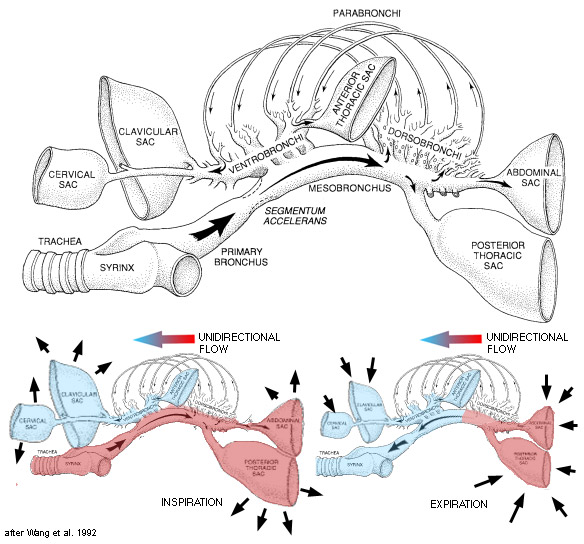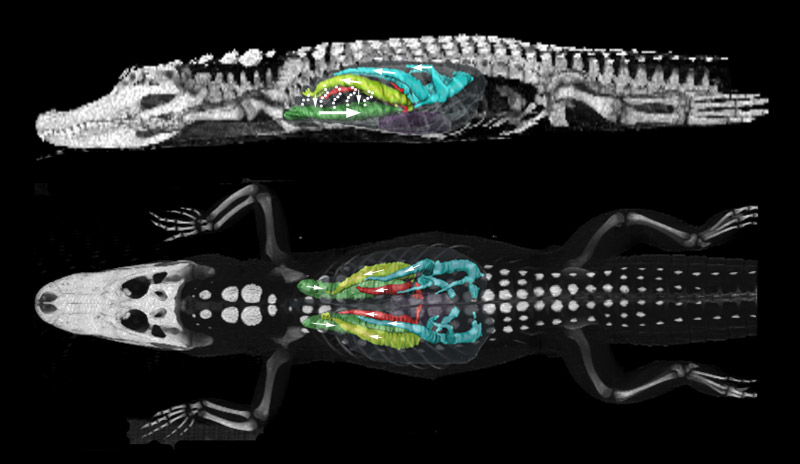Schematic of airflow in the avian lung During inspiration the airsac expand and air flows into the bird. In the lung, part of the stream of fresh air (red) flows directly through the intrapulmonary bronchus and into the caudal air sacs and part flows into the dorosbronchi, through the parabronchi, into the ventrobornchi, and finally into the cranial airsacs. On expiration, the air in the caudal air sacs flows into the dorso, para, and ventrobronchial circuit before leaving the lung by way of the primary bronchus (after Wang et al 1992). |
Computed tomography and map of airflow in the alligator lung Airflow through the homologues of the avian dorso bronchi (blue, yellow, red) and the ventrobronchi (geen), and parabronchi (dashed lines) is in the same direction during both phases of ventilation. The region of the lung that lies ventrocaudal to the conducting airways is homologous to the avian air sacs. Arrows show directiong of airflow (based on Farmer and Sanders 2010, Farmer 2010). |
|---|---|
|
Computational Fluid Dynamics Model of Airflow in the Green Iguana A) Medial view of volumetric mesh generated from computed tomography data. Head is toward the left. Flow during two differeint times inspiration (B and C) and expiration (D and E) is projected in the coronal (left) and axial (right) planes. Along the mesial wall the flow is undirectional and moves craniad (red color). During inspiration there is a high speed stream moving caudad along part of the lateral wall (from Cieri et al 2014) |
Schematic of airflow in the monitor lung Air flows cranaid along the lateral wall during both phases of ventilation (from Schachner et al. 2014). |



